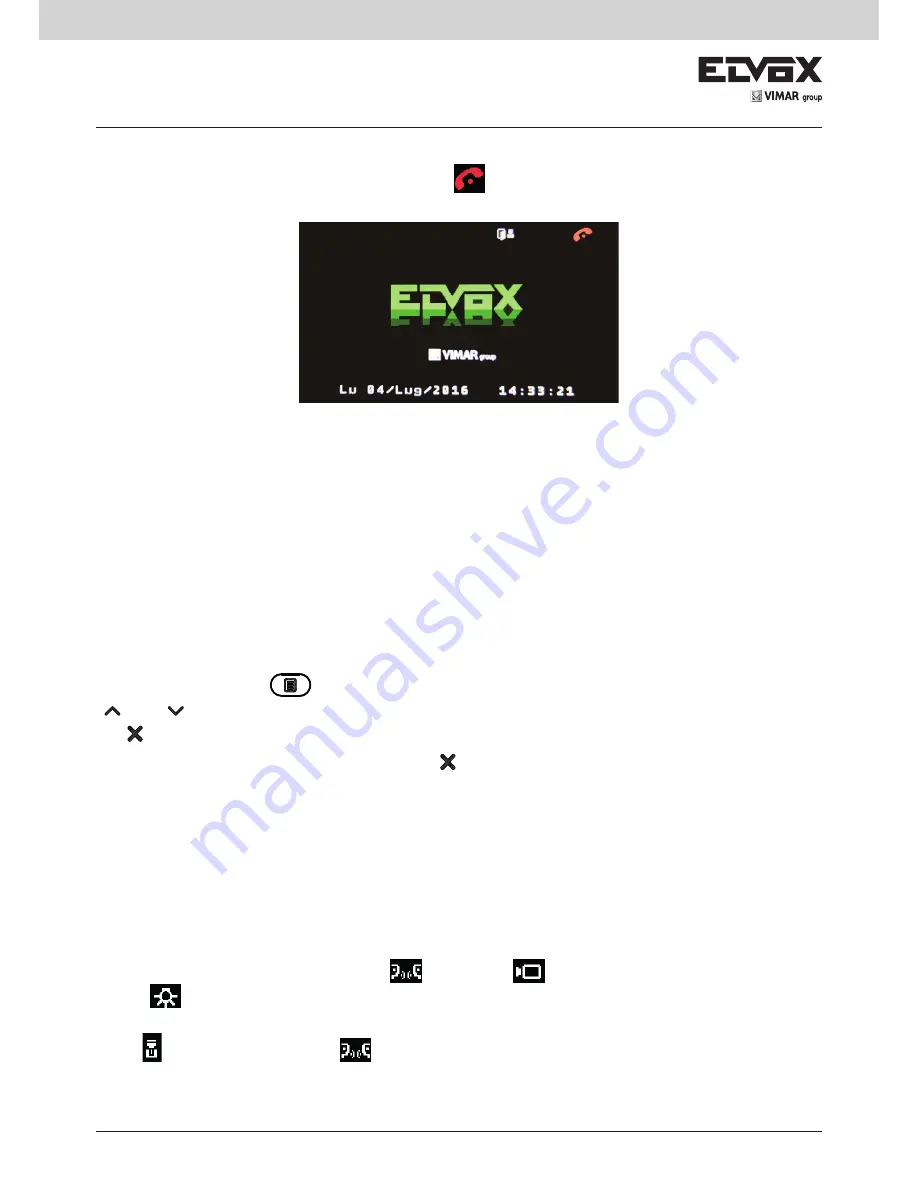
32
7” Due Fili Plus porter switchboard
Events list
When there is at least one event that is not served, the icon
will flash at the top right of the screen.
Events notification
The switchboard saves the following events in memory (the type under which they are classified is shown in brackets):
1. Calls unanswered by the switchboard, i.e. missed calls (EVENTS).
2. Calls purposely rejected by the switchboard (EVENTS).
3. Lock activations (LOCK).
4. Relay activations (RELAY).
5. Door open notification (DOOR OPEN).
6. Door closed notification (DOOR CLOSED).
7. F1 activation (F1)
8. F2 activation (F2).
To access the list, press the
key: the most recent event will be shown (indicated by the number 1). Use the keys
and
to scroll through the list, ordered from the most recent to the least recent event. To close the display, press
the
key or wait for the inactivity timeout to elapse.
To delete the entire list of events, press and hold the key
for at least 0.5 seconds, then enter the installer PIN. It is not
possible to delete a single event.
The display includes the following information.
On the first line, on the left, the type of event. On the right, indicated in the format I / T (N): the index of the event displayed
(I), the total number of events in the list (T) and the number of events not yet served (N).
The date and time of the event is indicated on the second line, in blue and in the configured format.
On the third line, in the case of EVENTS, the message NOT SERVED is displayed, or alternatively the date and time when
the event was served. For details see the next paragraph, Events service.
The fourth line displays information relative to the source of the event: a symbol followed by the user identification number
and, if applicable, name. It may be an indoor unit
, a speech unit
, or another system device, such as a relay, for
example
.
The fifth line displays information relative to the destination of the event or additional generic information. For example, the
symbol
to indicate a switchboard, or
for an indoor unit, followed by an identification number, and, if applicable, a
name.























